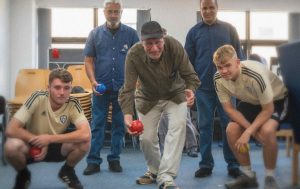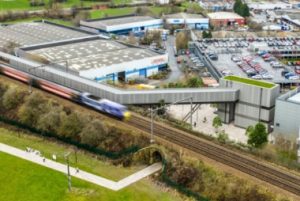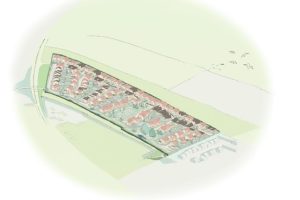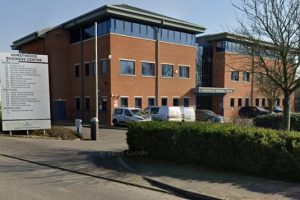UK’s first commercial robot eye takes to the skies over Yorkshire

A WEST Yorkshire company has become the first in the UK to be granted a licence to operate a German-made, eye-in-the-sky flying unit.
The MRL Eye is a ground-breaking micro-UAV – unmanned aerial vehicle – with full CCTV capabilities which can be used to survey inaccessible or dangerous locations, overhead power lines or pipeline inspections and traffic management.
The ‘spybot’ is used by the military and several police forces in the UK for surveillance or searching in dangerous or difficult terrain.
A number of police forces recently had to ground their flying eyes when the Civil Aviation Authority decided a ‘pilot’s licence’ was needed to operate the mini aircraft.
But MRL Eye, operated by Knottingley-based international safety management company MRL, is the first organisation in the country to be granted an operator’s licence.
MRL Eye provides constant airborne imaging or data transmission while hovering and flying. It has a unique, autonomous self-positioning and self-stabilising flight management processor that allows operators to use the unit safely and effectively.
Just a metre in circumference, it is lightweight, silent and ready to go within minutes by one operator.
With vertical take-off and landing capabilities there are no limitations on where it can be used for surveying or surveillance – either outdoors or high inside huge industrial buildings or cathedrals.
The UAV can carry a range of payloads including a colour video, low-light, black-and-white video, high-resolution stills and infrared thermal imaging cameras.
On the ground, MRL use a high-tech surveillance vehicle in which images from the flying eye can be seen in real time on a large screen and recorded to computer, before being transmitted to anywhere in the world.
John King, MRL Eye project manager, said: “The UAV is an amazing piece of kit. It is so versatile and responsive it can be used in so many locations which are normally inaccessible and can give an unusual bird’s-eye view to put a location into perspective in its setting.
“Helicopter filming is the only other alternative, but helicopters are noisy, bulky and not always environmentally sustainable. Also, they cannot be used inside large structures and helicopter hire is expensive, which is becoming more of a factor for clients.”
Although it has taken MRL 12 months to secure the licence, the company supports the line the CAA has taken, as all air users must be able to work together safely.
MRL director Phil Storr said: “This is part of a significant investment by the company. We see a revolutionary new way of addressing surveys at height that require difficult and dangerous access.”
MRL has received a number of enquires from infrastructure companies in the power, oil and construction sectors from across UK, Europe and North America, all of whom recognise the benefits of the new technology.
Mr Storr added: “UAV’s will become much more of the norm over the next five years as technology continues to improve and becomes more sophisticated.”
The flying eye was put through its paces at an official launch at Carlton Towers, near Selby, where it was flown high over the rooftops to survey the Gothic-style stately building which is now a venue for weddings and corporate or social entertaining.








